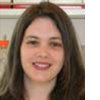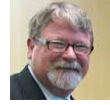Let’s Think Through the Great Digital Rush
 Technology and teaching and learning, the times are a changing! Recently on the BLOSSOMS Twitter site, I tweeted this Blog from Huffington Post: Technology Education for Students Is Essential in Creating a Future STEM Workforce, and It Starts With Educating Teachers, by Felix W. Ortiz III. This Tweet was re-Tweeted and “favored” by more people than any other Tweet I have ever posted. So, I thought it might be time for some reflection on the message. Technology and teaching and learning, the times are a changing! Recently on the BLOSSOMS Twitter site, I tweeted this Blog from Huffington Post: Technology Education for Students Is Essential in Creating a Future STEM Workforce, and It Starts With Educating Teachers, by Felix W. Ortiz III. This Tweet was re-Tweeted and “favored” by more people than any other Tweet I have ever posted. So, I thought it might be time for some reflection on the message.
The point of the blog was that teachers, at least half in their mid-40’s and older, were not raised and trained in the digital age now so familiar to our young people. So that bringing technology into the classroom must start with bringing our teachers, usually decades older than their tech-savvy students, into the digital age – to train them before trying out all sorts of fancy digital gadgets in the classroom and before offering computer coding or programming lessons. Read more.
Biology for Citizens of the World
 This past semester, I was offered my dream career task. I was given free reign, as the new Associate Director of the Honors College at UMass Boston, to teach two college biology classes – capped at 20 students each – in any way or format that I wanted. This past semester, I was offered my dream career task. I was given free reign, as the new Associate Director of the Honors College at UMass Boston, to teach two college biology classes – capped at 20 students each – in any way or format that I wanted.
Upon receiving this assignment, I kept asking questions out of sheer disbelief: “But presumably I have to use a textbook?” or “Presumably I still have to give exams?” Each time I asked a question about needing to include a component that is assumed of an introductory level college biology class, the answer was always “no.” Slowly I came to accept the cold hard truth – I was about to embark on my dream career task. Read more. |
 |
Assess Like a GPS: Keeping Students on the Learning Path
 If I were to walk up to you and simply say the word "assessment", what would you think of? Besides wondering why a perfect stranger came up to you saying the word "assessment", you might think of state tests or other instruments that measure student progress for accountability purposes. But what if I told you that the most powerful assessment is not a test given by the state nor is it one that requires students to fill in an answer sheet? If I were to walk up to you and simply say the word "assessment", what would you think of? Besides wondering why a perfect stranger came up to you saying the word "assessment", you might think of state tests or other instruments that measure student progress for accountability purposes. But what if I told you that the most powerful assessment is not a test given by the state nor is it one that requires students to fill in an answer sheet?
The assessment that I am talking about is formative assessment, an ongoing process where teachers and students alike track progress towards a learning goal. Formative assessment is not administered once a year, but is on-going in classrooms every day. In a STEM classroom, it is not only the student’s learning of content that is being assessed, but also the skills and practices that students need to use in order to apply the content. Read more.
The Evolution of a K-12 STEM Outreach Pioneer
 Few things tell school kids they’re in for an unforgettable science lesson like letting them touch a Van de Graaff generator and having their hair stand on end. Few things tell school kids they’re in for an unforgettable science lesson like letting them touch a Van de Graaff generator and having their hair stand on end.
Showing students how to illuminate a pickle like a light bulb by running electric current through it is almost guaranteed to capture their interest in science.
But getting the mayor of the fourth-largest city in Texas to eat a graham cracker that has been frozen in liquid nitrogen—that’s sure proof Rick McMaster has reached the top echelon of volunteer science educators in the United States. Read more. |